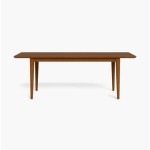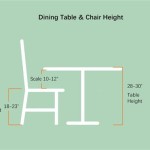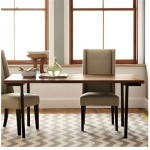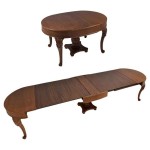Dining Room Table In Kitchen
Incorporating a dining room table into the kitchen has become a popular trend in modern home design. This configuration offers a multitude of benefits, ranging from space optimization to creating a cohesive and inviting living space. However, there are several factors to consider when implementing this design concept, such as kitchen layout, table size, and aesthetic compatibility.
One of the primary advantages of having a dining room table in the kitchen is the efficient use of space. By eliminating the need for a separate dining room, you can free up valuable square footage in your home. This is particularly beneficial for smaller homes or apartments, where every square foot counts. Additionally, combining the dining and kitchen areas creates a more open and spacious feel, making the overall living space more inviting.
When choosing a dining room table for your kitchen, it is important to consider the size and shape of both the kitchen and the table itself. The table should be large enough to comfortably accommodate your family and guests, but it should not overwhelm the kitchen space. A round or oval table can be a good option for smaller kitchens, as they take up less space and create a more intimate atmosphere. Conversely, a rectangular or square table may be more suitable for larger kitchens and can provide more seating capacity.
The aesthetic compatibility of the dining room table with the kitchen is another important factor to consider. The table should complement the overall style and décor of the kitchen, both in terms of color and material. For example, a rustic wooden table can add warmth and character to a traditional kitchen, while a sleek glass or metal table can create a more modern look. By carefully selecting a table that harmonizes with the existing kitchen design, you can create a cohesive and visually appealing space.
In addition to the practical and aesthetic benefits, having a dining room table in the kitchen can also foster a sense of community and togetherness. By centralizing meals and gatherings around the table, you create a space that encourages family and friends to connect and share experiences. This is especially beneficial for families with young children, as it provides a dedicated area for meals and homework, helping to establish routine and structure in your home.
However, there are a few potential drawbacks to consider when incorporating a dining room table into the kitchen. Firstly, it can reduce the amount of available kitchen storage space. To mitigate this, consider installing additional cabinetry or shelves in the kitchen to accommodate your storage needs. Additionally, the presence of a table in the kitchen can create a more cluttered and busy feel, especially during meal preparation and cleanup. To address this, it is important to maintain a clean and organized kitchen and to minimize clutter on the table surface.
Overall, having a dining room table in the kitchen offers numerous advantages in terms of space optimization, functionality, and aesthetics. By carefully considering the size, shape, and compatibility of the table, you can create a cohesive and inviting living space that meets your practical and aesthetic needs. However, it is important to be aware of potential drawbacks and take steps to mitigate them in order to fully enjoy the benefits of this design concept.
Difference Between A Kitchen Table And Dining Room Fif
9 Ways To Fit A Table Into Cozy Kitchen
35 Welcoming Eat In Kitchen Ideas For Any Space
3 Clever Ideas To Help Integrate A Kitchen Dining Living Space
Kitchen Island Dining Table In Open Concept Living
23 Kitchen Table Décor Ideas To Try In Your Home
Designing Your Dining Table Around Dream Kitchen Wren Kitchens
Wood Dining Table The Lyla Farmhouse Kitchen Set With Stools Or Benches Etsy
Where Shall I Put The Table In My Kitchen Diner Ie
Multipurpose Dining Room The Oak Furnitureland Blog








